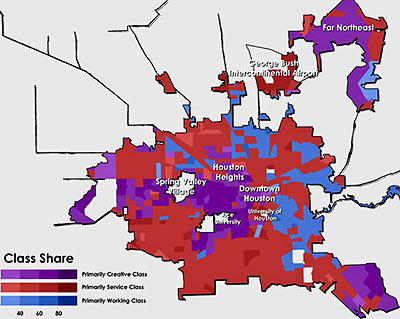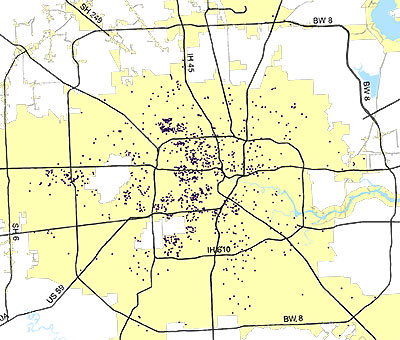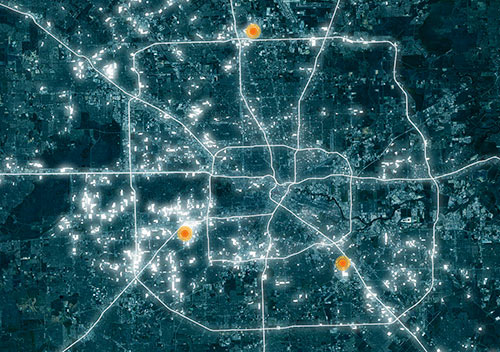
Before delving into the communities residents have built for themselves at the St. Cloud apartment complex on Hillcroft in Gulfton, Thai Xuan Village on Broadway near Hobby Airport, and Greenspoint (each marked in orange on the map), UH architecture prof Susan Rogers tries to present the big picture of Houston’s multifamily situation — accompanied by the above heat map showing (according to HCAD land-use data) where the apartments are: “315,357 is the number of multifamily apartments housed in buildings comprised of 10 or more units. Forty percent of this housing, or just over 140,000 units, were constructed between 1960 and 1979. Today, this housing is home to more than 20 percent of Houston’s two million residents. The units are dispersed in roughly 600 separate complexes, with an average of 250 units, and typically constructed at densities of 30-40 units per acre. Not surprisingly, the new projects are located predominantly outside the Loop and many are in a downward spiral of disinvestment.”
Map: Rose Lee


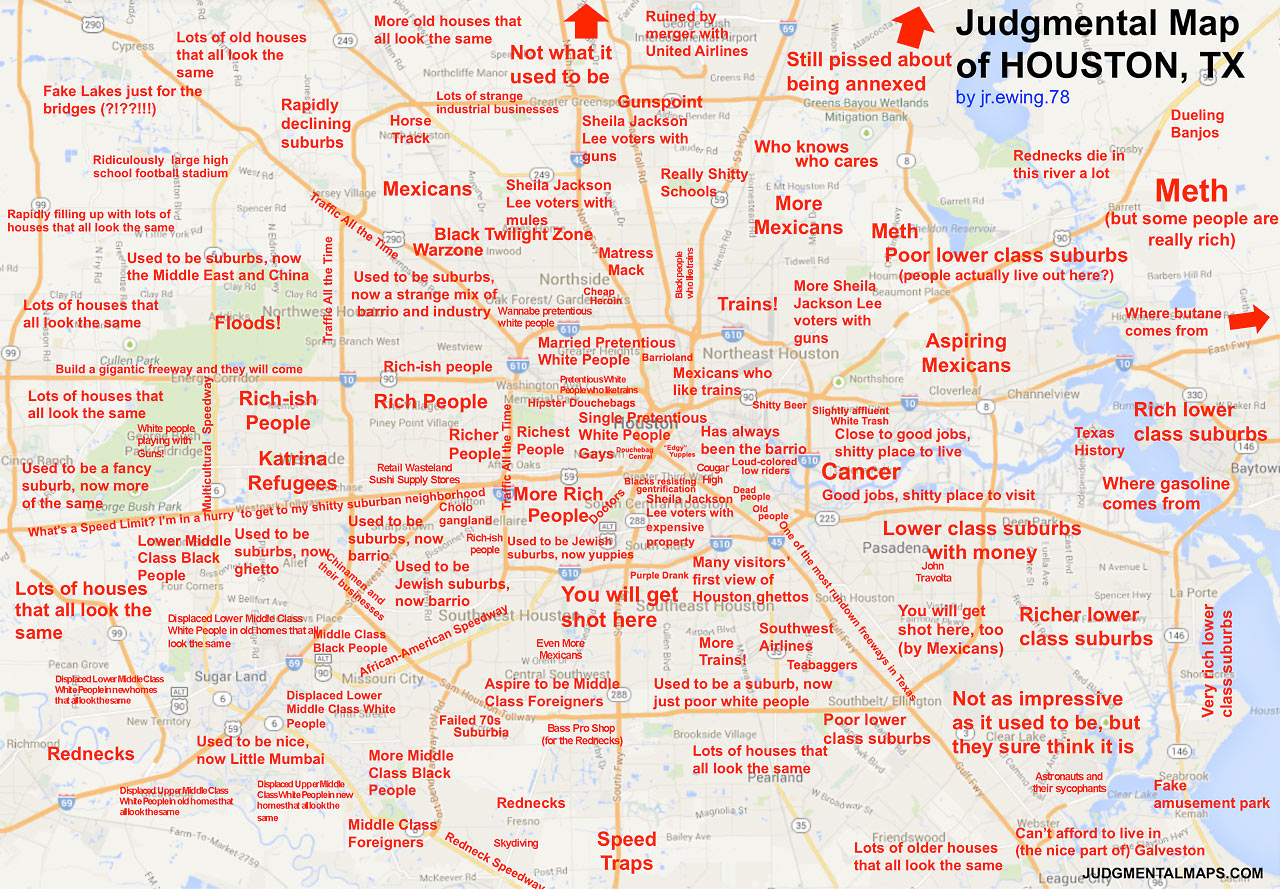
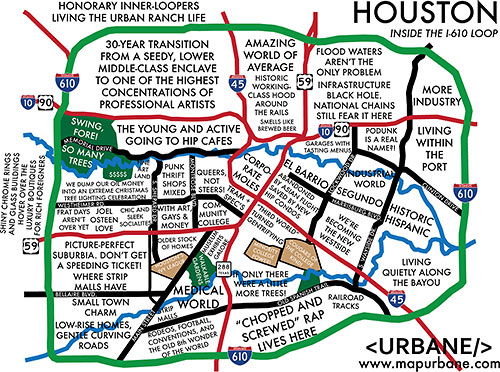
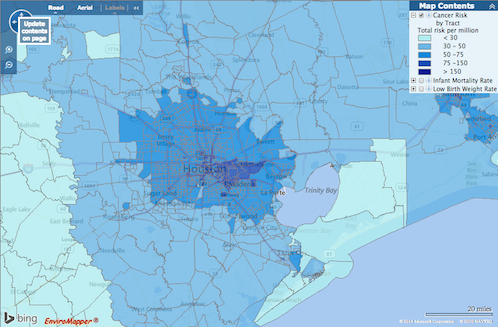
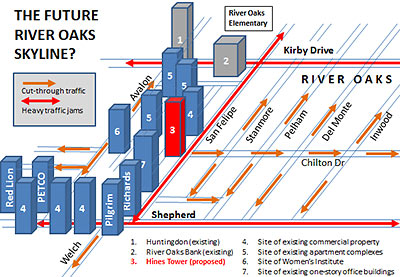
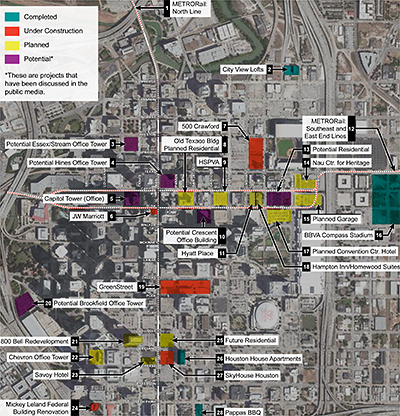

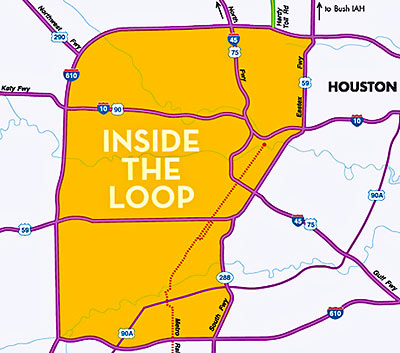
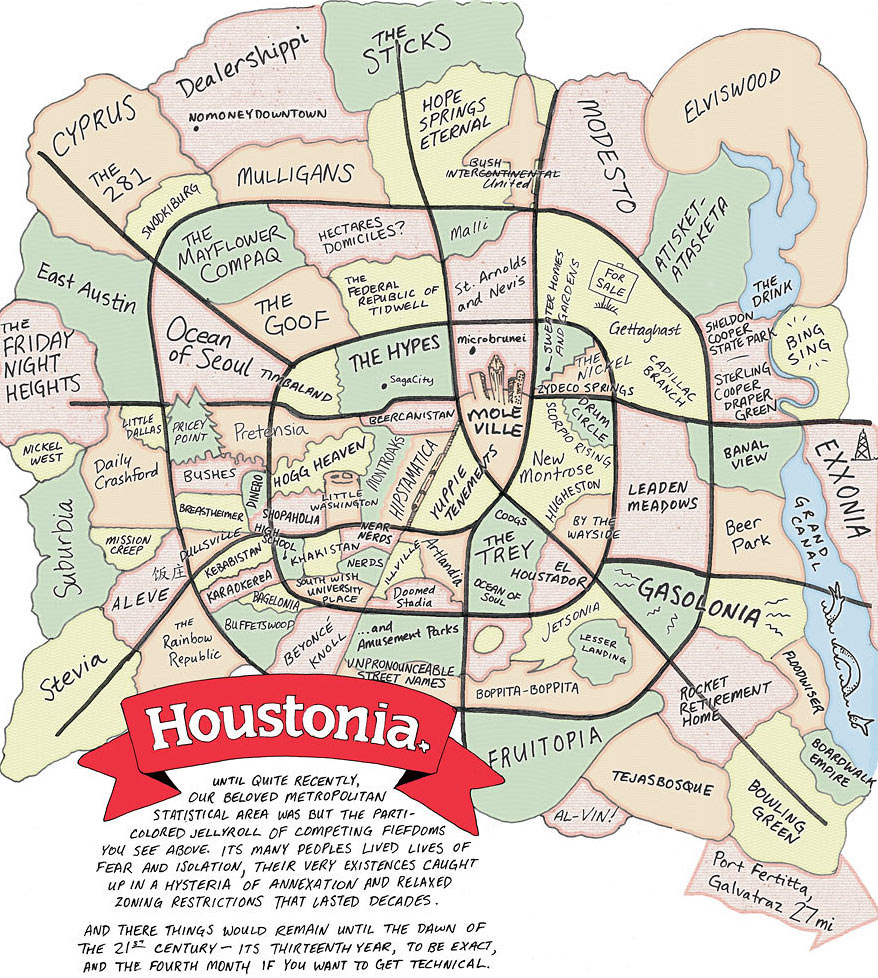
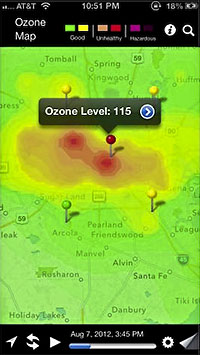 A team comprising researchers at UH, Air Alliance Houston, and the American Lung Association have launched OzoneMap, an app that “monitors chemical weather,” reports John Metcalfe of The Atlantic blog Cities. And whether the app helps explain your coughing fit or alerts you to the chance of a really pretty toxic sunset, the best part is that it’s only available in Houston! And why Houston, of all places? Besides the industrial
A team comprising researchers at UH, Air Alliance Houston, and the American Lung Association have launched OzoneMap, an app that “monitors chemical weather,” reports John Metcalfe of The Atlantic blog Cities. And whether the app helps explain your coughing fit or alerts you to the chance of a really pretty toxic sunset, the best part is that it’s only available in Houston! And why Houston, of all places? Besides the industrial 
